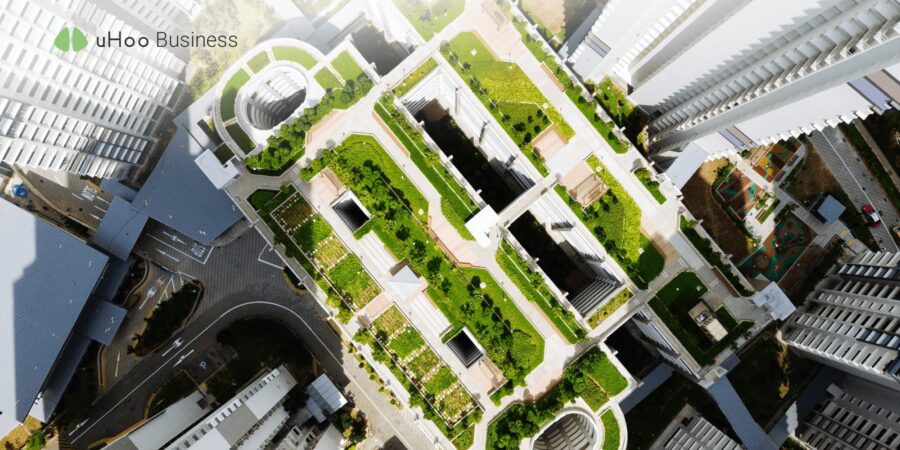The concept of “going green” is not just a trend. It has expanded beyond environmental activism and is now a significant factor in the real estate market, with investors focusing on green building investments. They ponder on the profitability of green initiatives in commercial real estate. The promise of green real estate lies not just in its ability to protect the environment but also in its potential for economic gain.
Economic Benefits
The economic benefits of environmentally friendly buildings are manifold. Incorporating sustainable building practices and eco-friendly systems translates into the following advantages:
Reduced energy bills
Reduced energy consumption is one of the most tangible benefits, with green buildings typically using less electric power thanks to:
- Efficient lighting
- Better insulation
- Renewable energy sources like solar panels
- Smart technology
Water bills reduction
Of course, savings extend beyond electricity. Reduced water bills, along with conserving this precious resource, is made possible thanks to:
- Water-efficient fixtures
- Rainwater harvesting
- Water recycling systems
Lower operational costs
Sustainable buildings also utilize resilient materials that require less maintenance. This spells lower long-term operational costs. Examples of resilient materials include:
- Recycled steel
- Bamboo
- Concrete with recycled content
- Engineered sustainable wood products
- Low VOC paints and finishes
These materials not only minimize environmental impact but also contribute to the overall resilience and sustainability of the building.
Higher demand with a premium price
There’s growing evidence that tenants are willing to pay a premium for spaces in green buildings, owing to the health and wellness benefits they offer. This increased demand can drive the following:
- Higher rental income
- Lower vacancy rates
- Stronger ROI
The Leadership in Energy and Environmental Design (LEED) certification is recognized globally as a mark of sustainability excellence. LEED-certified buildings are not only environmentally friendly but also tend to command higher rental premiums compared to their non-green counterparts, directly positively impacting profitability.
Profitability Analysis
When evaluating the ROI of green building investments, the analysis should go beyond the initial costs. True profitability from green real estate comes from long-term operational savings and the increased value of the property.
Green buildings offer durability and lower utility and maintenance expenses, contributing to a better net operating income (NOI). Additionally, these properties typically come with various tax incentives and rebates, a clear advantage for the bottom line of investors.
Investors and stakeholders can also look at the growing trend of “green financing.” Sustainable projects receive favorable loan terms. These incentives help with initial investments, while the property’s ensuing performance contributes to incremental returns.
Enhancing Value with IAQ Monitoring
Indoor Air Quality (IAQ) has become a critical component in the valuation of commercial real estate. Sophisticated monitoring tools like the uHoo Aura make it possible to quantitatively assess and communicate the healthfulness of indoor environments. The latter is a valuable feature in the wake of global health concerns.
Implementing IAQ monitoring not only provides a safer, healthier space for occupants but also contributes significantly to preserving the value of a property. By demonstrating a commitment to well-being and safety, investors can justify higher lease rates and enhance tenant retention — both key factors in real-world profitability.
Buildings equipped with devices like uHoo Aura can achieve superior air quality standards, thus increasing attractiveness to high-profile tenants who prioritize health and sustainability. These features help properties stand out in a competitive real estate market.
Conclusion
The path to profitability through green real estate is paved with both environmental and economic incentives. The initiative to invest in green building practices offers a clear competitive edge, resulting in cost savings, increased tenant attraction, and enhanced property value. The economic gains go hand-in-hand with societal benefits, highlighting green building investments as a smart and ethical choice for commercial real estate players. With the roles of technology like IAQ monitors and certifications like LEED in enhancing profitability, the future looks bright — and green — for the environmentally conscious investor.



